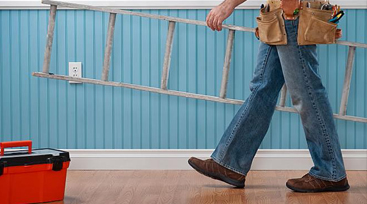
You simply cannot please all of the people all of the time.
This adage is particularly true with real estate and putting your house on the market- because homes, locations, and such are so much a matter of personal preference, some people will find something to criticize about even the most perfectly staged, perfectly priced property on the market.
As a listing agent, my job is not to try to make your listing be all things to all people- but you do want it to appeal to enough buyers that you get one great offer (and multiple offers never hurt anybody, either!). That said, you don’t want your listing to be the house that nearly every buyer and agent sees, rolls their eyes at and utters the same few, predictable, deal-killing criticisms.
Fortunately, what is predictable is avoidable. Unfortunately, many of the things that make a listing susceptible to critics are issues on the seller’s side of the preparation for getting it ready to sell. Let’s explore the most common things buyers hate about listings they see.
House Critic Complaint No. 1: Odors
You might think I’m beating a dead horse or even preaching to the choir. But as long as house hunters keep asking me why, in the name of all that is Real Estate related, they keep viewing homes that smell like all sorts of mishmash, I’m going to keep repeating this!
Viewing a home sounds like it’s all about the visual, and mind you, visuals are critical- your listing should be at its Sunday best when it’s being shown, in terms of being spruced, staged and clutter-free. But when a buyer comes to see your listing, they don’t turn off the rest of their senses. There is nothing that can turn a buyer off from a home they’d otherwise like more quickly than a powerfully bad odor, in particular, cigarette, pet odors, and food smells in a house that seems to have been well-cleaned create the concern that those smells might be permanent and that the buyer might not be able to get rid of them without dropping some serious cash on cleaning or even removing wall, window and flooring.
If I am listing a home and you know that someone has been habitually smoking in it or that the seller has had a “challenge,” let’s say, with pet accidents, I cannot ignore the problem. Do not think that because you had the carpet shampooed or the drapes cleaned, or because YOU can’t smell anything, that the problem is gone. The human sense of smell very quickly gets used to smells that it lives with or is surrounded with on a regular basis.
It’s one of my toughest jobs as an agent to point out bad smells and odors, no matter how painful the conversation, and to make sure they are eliminated by any means necessary before you place your house on the market.
Critic Complaint No. 2: Overpricing
There’s the one kind of overpricing that makes a buyer say, “Hmmm, seems a bit high, but let’s go see it anyway.” The other kind of overpricing is one that makes the buyer say, “I’ll wait until a price reduction,” or worse, hold their sides because they are laughing too hard!
It is common in our market for agents and sellers alike to say, “Let’s see if we can get it!”, and price a home a little above market value. However, when overpricing is glaring, many buyers and buyers’ agents are less likely to actually come out and see the place, especially if they weed it out online after comparing it’s pricing to all the other homes in the area. Often, homes this severely overpriced simply don’t sell, or at least not until after they have had some serious price cuts or have been on the market so long buyers begin to feel confident about making lowball offers.
The goal is the opposite- you want your listing to stand out as a property that is not priced so low as to throw up red flags but does present a good value for the money- that’s what motivates buyers to get out of their chairs and into the property for a viewing, and hopefully gets you, the seller, into a multiple offer situation!
I don’t set the price of my listings, I can only suggest. It’s obvious that the agent-seller conflict about overpricing is one of those battles that have been fought since Moby Dick was a minnow!
Here’s how to Critic Proof your home’s listing against this issue: Fixate on the comparables. Smart sellers deactivate their emotional attachment and the very human tendency to overvalue their precious homes by poring over the sales prices (not list prices) of similar, nearby homes that have recently sold. The buyer that wants to purchase your home doesn’t see the value in the fact that Jr. took his first steps in the Great Room, and won’t want to pay for it! Walk through this data — don’t forget to note the overpriced listings that are lagging on the market, and also any value-priced listings that have sold for way more than asking.
When I get a seller that simply won’t budge off a dramatically high list price, I have to consider whether this listing makes sense to take in the first place, or I will also use my wonderful office and the combined experience of the agents in my market center in a listing tour. If the agents overwhelmingly comment that they think the home is significantly overpriced, it is my duty to communicate this feedback to the seller. It doesn’t do either party any good to have a listing that is just sitting out there, not selling.
Critic Complaint No. 3: Dirt and/or Messes
Possibly the single largest source of Critic Complaints I’ve ever heard are the dirt, messes, and personal belongings that buyers find so distracting when they walk into a home for a viewing. Obviously, homes that are filthy from floor to ceiling are ripe for the picking for critics. What is underestimated is how often even savvy homebuyers are distracted (and disgusted) by relatively clean homes that just have a few outstanding messes, like piles of dirty dishes in the sink, piles of dog poo in the yard, or even piles of papers, mail, books or clothes lying out in plain view.
Will one or two such items ruin the sale of your home? It’s doubtful, however, a few of them (or more) can certainly distract a buyer enough that they fixate on the home’s messes and, in the process, fail to see what is so great about your property. As I see it, cleaning up faithfully before leaving for work every day and before every showing free-so it makes no sense to even run the risk of turning off a prospective buyer by letting messes get in the way of their ability to visualize themselves and their families flourishing in your home.
Make sure you brief the sellers in detail on what buyers expect, in the way of cleanliness. Also, set up a plan for giving them enough notice of showing appointments that they can do a quick, but thorough, house cleaning pass-through before every single viewing.
Critic Complaint No. 4: lots of little malfunctions
All of us tend to think our homes are in fantastic condition. After all, your sellers have had the furnace maintained regularly, they’ve installed granite and dual-paned windows, and maybe they even took your advice to have the floors refinished or the walls painted in preparation for putting the place on the market.
That’s all fantastic — all the noncosmetic work that’s been done to maintain and improve your listing should be trumpeted in your marketing materials, and the cosmetic items will (or should) speak for themselves. But here’s the thing: House hunters won’t be running the dishwasher or testing the furnace (at least not until inspections).
What they will do — almost unconsciously — is:
Flick light and fan switches.
Open or close window coverings, closet, room and entry doors.
Open and close drawers, cupboards, gates and fences.
Hold the handrails as they walk up and down the stairs.
They will hear leaky faucets and point out water spots from long-ago-repaired leaks, and they will notice (or potentially trip on) uneven exterior tiles, paths and walkways. And even though these items might be vastly less expensive to fix than the roof or sewer line you had replaced, they are much more visible and noticeable to a buyer. In fact, buyers don’t always even know that the little malfunctions and repairs that need doing are little or inexpensive. And when they notice a bunch of these sorts of things in a single property, they can jump to the conclusion that the whole place is rickety.
Since these little fixes are inexpensive to make, have them completed before you list, if at all possible. You might even ask your seller to walk through the property with you, pinpoint all the necessary little fixes and offer the a handyperson reference for someone you know works efficiently.
For professional real estate services, call me: (214) 609-7123 or jtrump@kw.com















